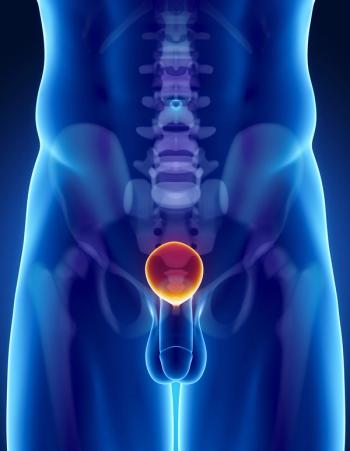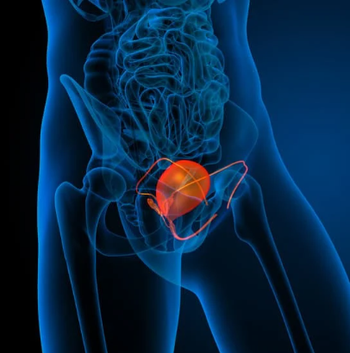
Observation Matches Surgery for Prostate Cancer Survival in Large Study
The results of the 12-year PIVOT trial shows men with early-stage prostate cancer who had a radical prostatectomy did no better than those actively monitored without surgery.
The results of the 12-year Prostate Cancer Intervention vs Observation Trial (PIVOT) shows men with early-stage prostate cancer who had a radical prostatectomy did no better than those actively monitored without surgery. The results were
The new study found that men with early-stage prostate cancer fared just as well with active surveillance when compared to radical prostatectomy
“Men with early-stage prostate cancer treated with observation had a similar length of life and [similar rates of] prostate cancer deaths with fewer serious harms compared to men treated with surgery,” said Timothy J. Wilt, MD, MPH, of the University of Minnesota School of Medicine and lead author of the trial. “Our results demonstrate that observation is a wise treatment choice for men with early prostate cancer-especially men with prostate-specific antigen (PSA) values of 10 or less.”
The data suggest that men with higher PSA levels may benefit from radical prostatectomies. Those men with a PSA value greater than 10 ng/mL had lower all-cause mortality (P = .04). The data trended toward significance for men with intermediate- or high-risk tumors (P = .07).
The trial included 731 men with localized prostate cancer. The mean age was 67 years, and the median PSA value was 7.8 ng/mL. The patients were randomized to either surgery or observation. The participants were enrolled from 1994 until 2002 and followed every 6 months for at least 8 years, until January 2010. The median follow-up time was 10 years.
Study Results
The absolute risk reduction of surgery compared to active surveillance was 2.9%. During the follow-up period, 47% of the men (171 of 364) who had undergone a radical prostatectomy died, compared to 49.9% (183 of 367) of the men who were followed by active surveillance (P = .22). Of the men assigned to surgery, 5.8% died from prostate cancer compared to 8.4% of those whose cancer was observed (P = .09), an absolute risk reduction of 2.6%. By the end of the study, 48.4% (354) of the men who participated in the trial had died.
Men assigned to the surgery group had a median survival of 13 years compared to 12.2 years for those undergoing observation. No difference in all-cause mortality and prostate cancer mortality was found with regard to age, race, histologic tumor features, or coexisting conditions.
The PIVOT trial results are in harmony with a
One death occurred in the surgery arm, and in the first 30 days following surgery, 21.4% of men had complications. More than 1 month following surgery, over 2% of men had urinary tract infections, surgical repair, bleeding that required transfusion, and urinary catheterization. Urinary incontinence was experienced by 17.3% of men in the radical prostatectomy arm compared to 6.3% of men in the observation group (P < .001). Similarly, erectile dysfunction occurred in 81.1% of those in the surgery group and 44.1% in the observation group (P < .001).
“Our findings support observation for men with localized prostate cancer, especially those who have a low PSA value and those who have low-risk disease,” said Dr. Wilt. “Up to two-thirds of men who have received a diagnosis of prostate cancer have a low PSA value or low-risk disease, but nearly 90% receive early intervention-typically surgery or radiotherapy.”
Role of Screening and Treatment of Prostate Cancer-No Clear Answers
Two previous PSA screening studies have resulted in different conclusions as to the role of PSA screening on survival in prostate cancer. One study
In their
“I would have preferred to see a study like this conducted in younger, healthier patients with a longer follow-up,” said Tomasz M. Beer, MD, deputy director of the Knight Cancer Institute at the Oregon Health and Science University.
Dr. Beer sees the shorter overall survival result as problematic. He questions whether a 10-year median overall survival in the PIVOT trial means the participants were just barely eligible for treatment. “In general, we believe that the benefits of effective treatment for localized prostate cancer begin to be seen after about 10 years and may become more pronounced after 15 years,” said Dr. Beer. “That is why treatment for localized prostate cancer should be reserved for men with adequate health and life expectancy, men who are likely to enjoy sufficient longevity and have the opportunity to benefit from treatment for their prostate cancer.”
Dr. Wilt also highlights this aspect of the results. “Any benefit through ten to fifteen years is small at best and does not outweigh diagnostic and treatment harms.”
While Thompson and Tangen highlight the foresight of the study authors to address an important long-standing question, they point out that the study was likely underpowered to detect a large clinical effect. Because only 15% of the participants died as a result of prostate cancer, much of the data (85% of the deaths) is not informative with respect to the trial endpoint. A further limitation is the evidence that 20% of participants did not stick to their assigned treatment on the study.
What is the best way to control prostate cancer using the tools and knowledge we have currently? Thompson and Tangen believe that trials in progress to accurately isolate the most high-risk patients using biomarkers are a step toward performing invasive biopsies only in men with lethal prostate cancer. Prostate cancer is a “spectrum of disease,” they state, and the focus must be on understanding those at high risk that require surgery and treatment. Understanding who are these patients is a high priority-and in the works.
Dr. Wilt pointed out that physicians now have a growing body of high-quality scientific evidence-including studies examining active surveillance for men with low-risk prostate cancer-helping them to confidently recommend active surveillance for many early-stage prostate cancer patients. “This will allow our patients to live a similar length of life, avoid the rare chance of death from prostate cancer, and prevent harms from surgery,” said Dr. Wilt.
“I don't think the message from this study should be that we withhold treatment until PSA is above 10,” said Dr. Beer. “The message should be that higher risk cancers are the ones that need to be treated and PSA is only one variable.”
Dr. Beer believes maintaining objectivity when evaluating studies is key in light of the recent PSA screening controversies. “Let's take care not to just look for support for our preconceived point of view in this and many other studies,” he said.
Newsletter
Stay up to date on recent advances in the multidisciplinary approach to cancer.

















































































